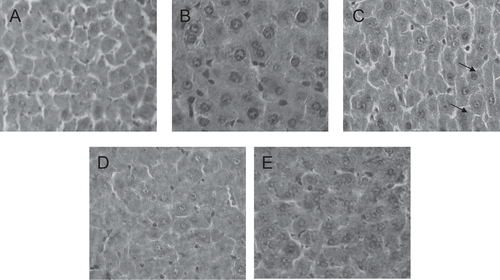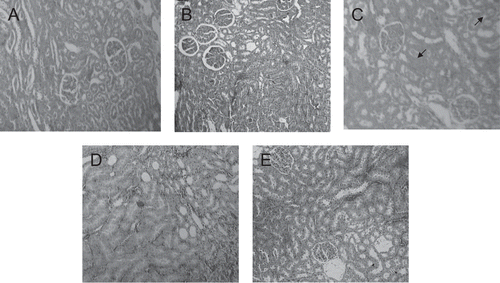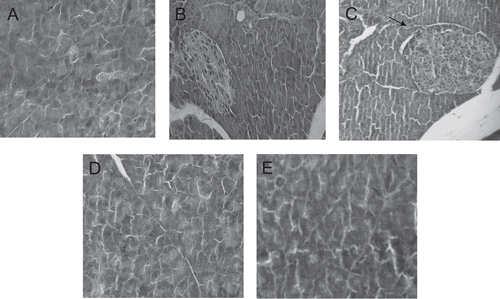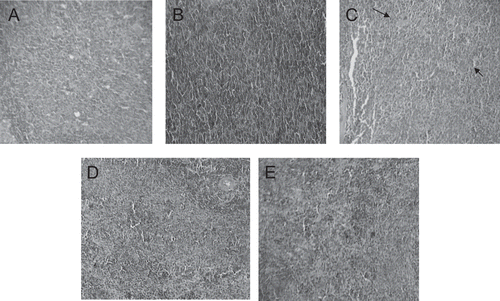Figures & data
Table 1. Body weight, weight gain, food and water intake of the control and experimental dams treated during gestation with the aqueous or the ethanol extract of B. monandra leaves.
Figure 1. Liver tissue portions (100 ×) of control (A) and experimental (B, C, D and E) dams. Observe the mild congestion in the hepatocytes of the 7,000 mg/kg aqueous extract dose treated dams (C arrows). (B) and (C) 1,400 and 7,000 mg/kg/day aqueous extract, respectively. (D) and (E) 1,400 and 7,000 mg/kg/day ethanol extract, respectively.

Figure 2. Kidney tissue portions (100 ×) of control (A) and experimental (B, C, D and E) dams. Observe the mild congestion in the renal ductile cells of the 7,000 mg/kg/day aqueous dose treated dams (C arrows). (B) and (C) 1,400 and 7,000 mg/kg/day aqueous extract, respectively. (D) and (E) 1,400 and 7,000 mg/kg/day ethanol extract, respectively.

Figure 3. Pancreas tissue portions (100 ×) of control (A) and experimental (B, C, D and E) dams. Observe the mild congestion and increased islets of Langerhans size of the 7,000 mg/kg/day aqueous dose treated dams (C arrows). (B) and (C) 1,400 and 7,000 mg/kg/day aqueous extract, respectively. (D) and (E) 1,400 and 7,000 mg/kg/day ethanol extract, respectively.

Figure 4. Spleen tissue portions (100 ×) of control (A) and experimental (B, C, D and E) dams. Observe the moderate poliviscera and splenic congestion at the 7,000mg/kg/day aqueous dose treated dams (C-arrows). (B) and (C) 1,400 and 7,000 mg/kg/day aqueous extract, respectively. (D) and (E) 1,400 and 7,000 mg/kg/day ethanol extract, respectively.

Table 2. Organ weight/body weight ratio and serum biochemical parameters of control and experimental dams treated during gestation with the aqueous or the ethanol extract of B. monandra leaves (data × 10−2).
Table 3. Biochemical serum parameters of the rats treated with the aqueous extract during pregnancy.
Table 4. Reproductive performance of the control and experimental dams treated during gestation with the aqueous or the ethanol extract of B. monandra leaves.
